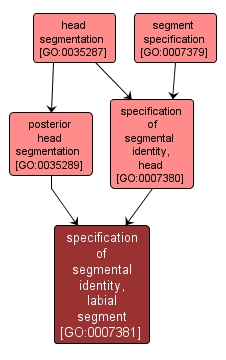GO TERM SUMMARY
|
| Name: |
specification of segmental identity, labial segment |
| Acc: |
GO:0007381 |
| Aspect: |
Biological Process |
| Desc: |
The specification of the characteristic structures of the labial segment following establishment of segment boundaries. Identity is considered to be the aggregate of characteristics by which a structure is recognized. |
|

|
INTERACTIVE GO GRAPH
|














